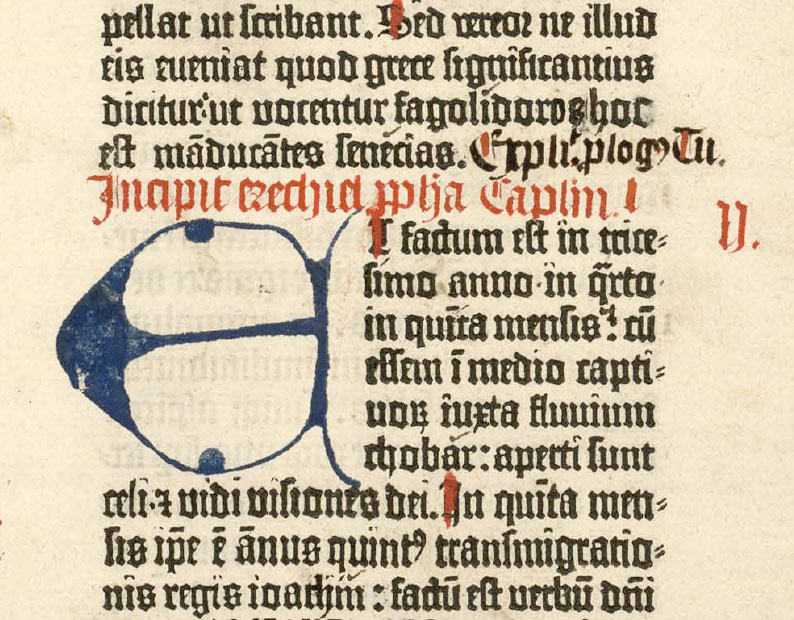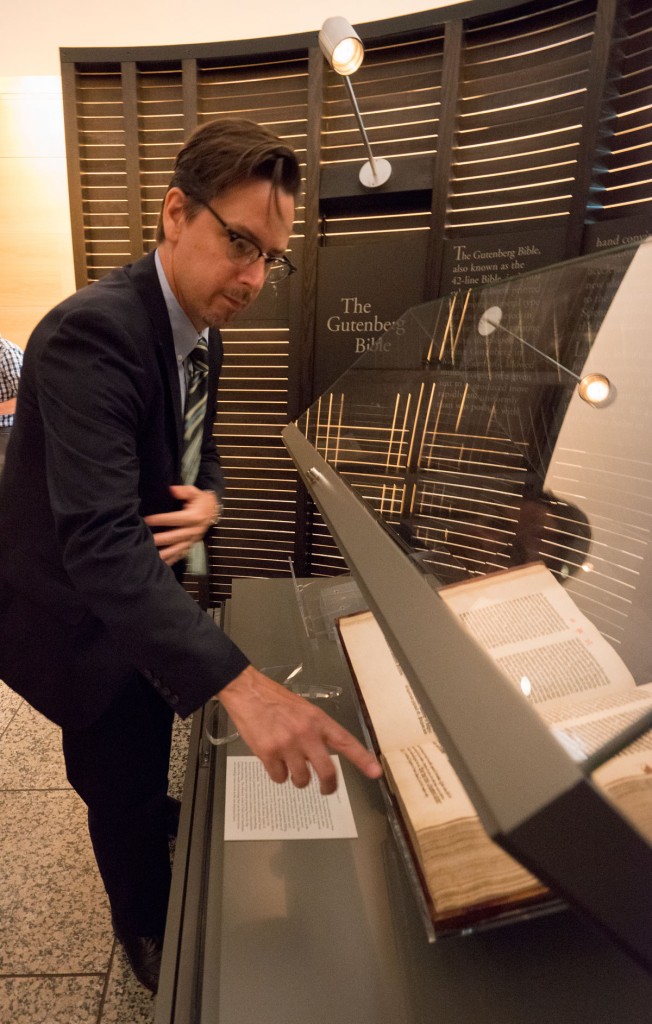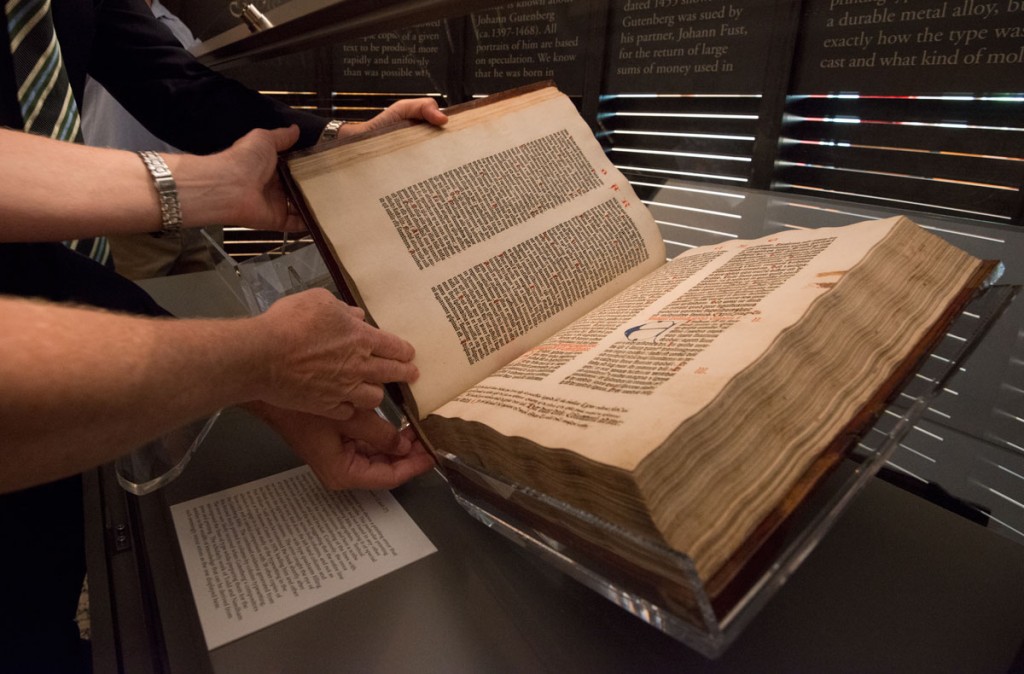The Ransom Center’s two-volume Gutenberg Bible is on permanent display in the lobby. Every three months the Center’s staff changes which page of the Bible is displayed, allowing us to share different pages with our visitors, and also protect the volumes from over exposure to light, stress on their bindings, and other preservation concerns. The process of turning the Gutenberg’s pages involves staff of the conservation department, exhibition services, the curator, and of course campus security. Each time we select a new opening we look for some unique or exemplary feature that will reveal the history of our copy or some unique feature absent from the other known copies of the Bible.
This spring we displayed volume one, leaf 40, which shows Exodus, Chapter 23–24:

The page includes a printing error that has been corrected in red ink by an early scribe. This particular printing error is unique to the Ransom Center’s copy and not found in any other recorded example of the Gutenberg Bible, making it of special interest to early readers and later bibliographers. Textual integrity in the Bible is a capital concern, and here a scribe has dutifully indicated the correct reordering of the lines with the letters a, b, and c, and a red bracket.

Scholars William Todd and Paul Needham have both analyzed and written about this particular typesetting error, and their illuminating conclusions can be read in these publications in the Ransom Center’s holdings: William B. Todd. The Gutenberg Bible: New Evidence of the Original Printing. Hanes Lecture, 1982; and Paul Needham. “The Compositor’s Hand in the Gutenberg Bible: A Review of the Todd Thesis,” PBSA, 1983.
In order to maximize preservation considerations, the staff alternates which volume is on display.
On July 1, 2015, the staff of the Harry Ransom Center turned the pages. For the next three months of summer, volume two will display the beginning of the book of Ezekiel, which presents two types of manuscript notations: rubrication and decoration (added by a paid artist) meant to orient the reader, and, more significantly, marginalia (added by an early owner) that gives evidence about the use and provenance of the Ransom Center’s copy.

At the top of the page “E Z E” in red refers to the name of the chapter, in this case Ezekiel. The large decorative letter E’s in red and blue appear at the beginning of the prologue of Ezekiel (red) and the beginning of the book of Ezekiel proper (blue).

The rubrication (or red letters) above the large letter E’s orient the reader, signaling the beginnings and endings of books and chapters. Below, we see that the prologue has ended

and the book of Ezekiel is about to begin.


The style of these decorations is somewhat common and difficult to place geographically, but the manuscript note in black ink at the foot of the page provides monastic instructions for which passages are to be read in the church and which are to be read in the refectory.

The instructions are consistent with the practices of the Carthusian Order. This note, and other manuscript evidence elsewhere in the Ransom Center’s copy, tells us that the Bible was read and used in a monastery, very likely before the year 1600.
Special thanks to Dr. Eric Marshall White, whose The Gutenberg Bible at The Harry Ransom Center: Description and Analysis in the CD-rom edition of The Gutenberg Bible at the Harry Ransom Center provided much guidance in the preparation of this posting.




